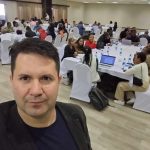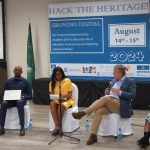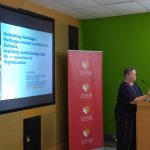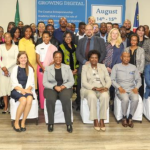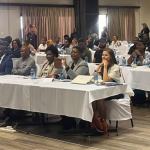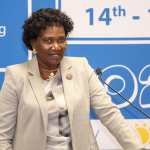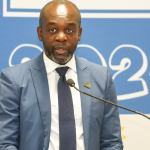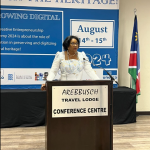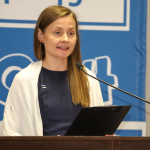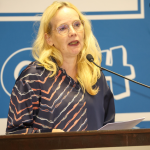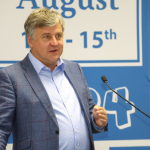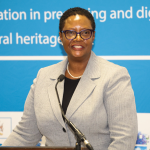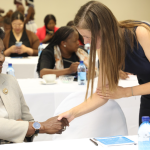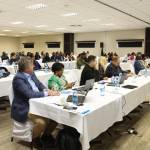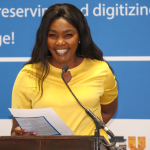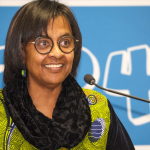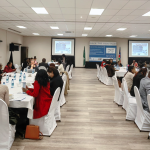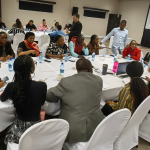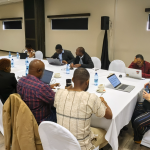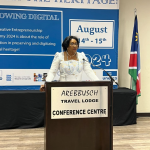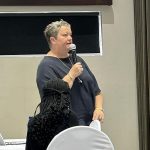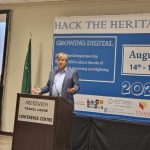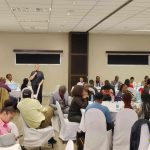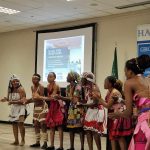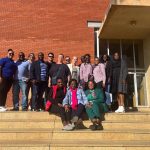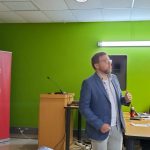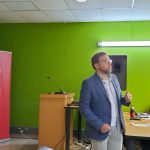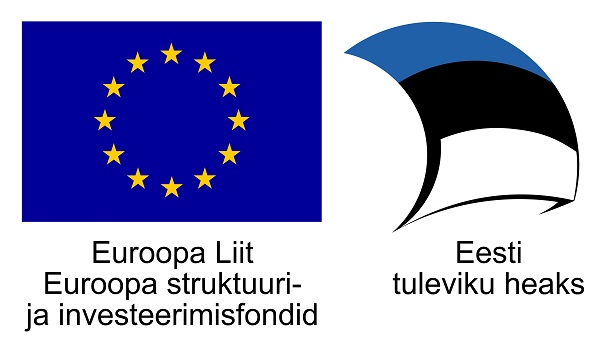How to Teach Cultural Heritage Digitization in Namibia?
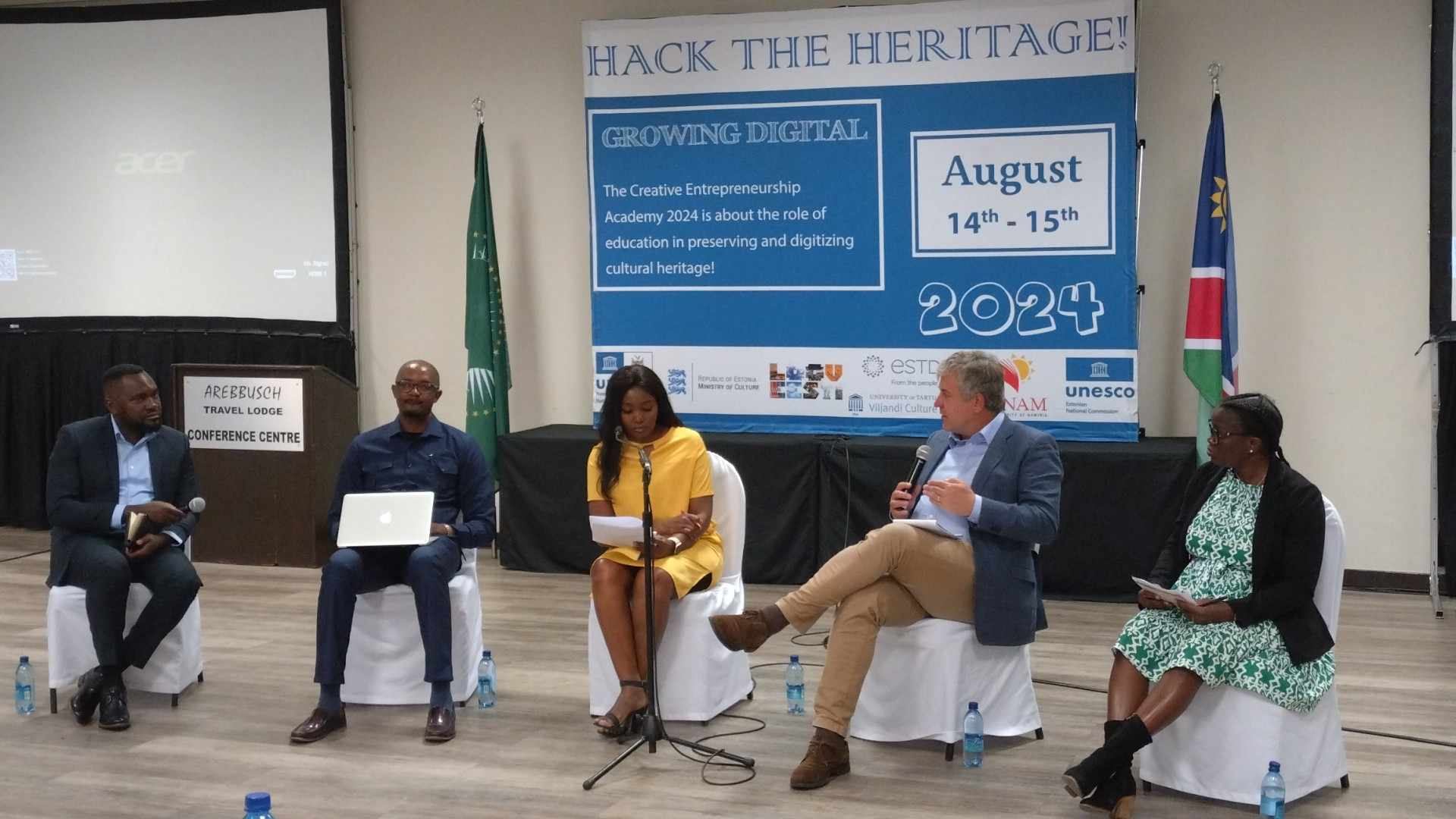
On August 14th, precisely at 8:30 AM, the Namibian national anthem will play at the Arebbush conference hall in Windhoek, Namibia. Namibia’s Minister of Higher Education, Technology, and Innovation enters the room, Dr. Itah Kandjii-Murangi, who is welcomed by a full house and a traditional international cultural group performing songs and dances. The conference “Hack the Heritage: The Role of Education in Preserving and Digitizing Cultural Heritage” organized by Creative Estonia and local partners has begun.
“Namibia has made significant progress in digitizing its cultural heritage through various projects and initiatives. The next step is to frame project-based activities within a more systematic plan and secure the necessary resources. The region’s unique feature is the large proportion of intangible heritage, for which new technologies offer exciting possibilities,” said Raivo Ruusalepp, Head of Digital Transformation at EY Consulting, in his opening speech, setting the direction for the discussions.
The journey to assist in preserving Namibia’s cultural heritage began last year when Creative Estonia organized a conference in Namibia to discuss the possibilities of digitizing heritage. “From the discussions, it became clear that knowledge-sharing must start at the university level to advance digitisation. We involved Viljandi Culture Academy and brought together representatives from Namibia’s digital and education sectors to think collectively about how curricula could be developed. This conference is the first step in that direction. Plans include faculty training, webinars, and a hackathon for students, where educators can apply what they have learned,” said Eva Leemet, CEO of Creative Estonia. The success of the project is also greatly supported by the UNESCO National Commissions of both Estonia and Namibia and the active faculty members of the University of Namibia (UNAM). The interest in the topic was immense, with high-ranking officials from various ministries and representatives from multiple universities in attendance.
“We need to review our educational programs, reconsider how we train our teachers, and rethink how we package and present cultural components in our education system. These conversations are not just academic—they are crucial for ensuring that education plays a central role in preserving and digitizing our cultural heritage,” encouraged Namibia’s Minister of Higher Education, Technology, and Innovation, Dr. Itah Kandjii-Murangi, to reflect on and discuss these issues.
“While last time the Namibian conference participants welcomed us with genuine interest and expertise in creative industries and heritage topics, and with enthusiasm to acquire digital skills, this time we saw a strong willingness from government agencies and their leadership to engage in these areas and move forward—our activities align closely with Namibia’s national goals and strategies. It was a pleasure to see once again that the cooperation with Estonian experts and organizations, the exchange of experiences, and the joint search for solutions are highly valued. Our contribution to sustainable development and connection with UNESCO’s mandate adds a global perspective to the collaboration,” said Madli Kumpas from the UNESCO Estonian National Commission.
“The value of cooperation between universities can start with simply knowing and understanding the different expectations and approaches involved in teaching. In this regard, it was certainly interesting to see where the approaches to teaching creative entrepreneurship in Estonia and Namibia are similar and where they differ. As is often the case with international collaboration projects, the initial discussions only scratch the surface of the topics, but all of this lays the foundation for deeper engagement, trust, and cooperation. One of the most important proposals from this visit for the University of Tartu Viljandi Culture Academy is that the winter hackathon planned in Namibia will be conducted in a heritage hackathon format, providing a good basis to combine the academy’s experience in organizing such formats with Namibia’s rich and diverse cultural heritage,” commented Jorma Sarv from the Viljandi Culture Academy.
In the two-day workshop following the conference, Estonian and Namibian faculty members delved deeper into curriculum and teaching methodology topics.
Despite the physical distance and cultural differences between Estonia and Namibia, we do have similarities, noted Ave Matsin, Head of the National Textile Program at the Viljandi Culture Academy. “I also participated in a previous similar project in Namibia, and I am genuinely pleased that we continued what we started. This time, both the conference and the faculty training seminar provided opportunities to meet with experts in the field, leading to meaningful dialogues and the development of several new professional collaboration plans. For example, it emerged that Namibia also has regions where, similar to Estonia, sheep wool production was once significant but has since become a declining industry. There is now an interest in reviving it in collaboration with local farmers. During the visit, it also became even clearer how vibrant Namibia’s diverse tribal cultural heritage is and how important it is to consider the opinions of communities in its preservation. At the same time, it is undoubtedly an inexhaustible source for developing heritage-based products and services, where Estonian experiences can be of great help.”
The next step in the program is a study visit to Estonia by UNAM faculty members and representatives from UNESCO Namibia’s National Committee, followed by webinars and a student hackathon.
The project team included Project Manager Kersti Kilg (Creative Estonia), and experts Raivo Ruusalepp (EY Consulting), Madli Kumpas (UNESCO Estonian National Committee), Jorma Sarv and Ave Matsin (Viljandi Culture Academy), and Toomas Roolaid (Selge Pilt).
Special thanks to Rosalia Nuuyoma and Ferdinand Katire (UNESCO Namibia), and Dr. Rosa Johnson and Dr. Marius Johannes (UNAM).
The project is funded by the Estonian Centre for International Development.

